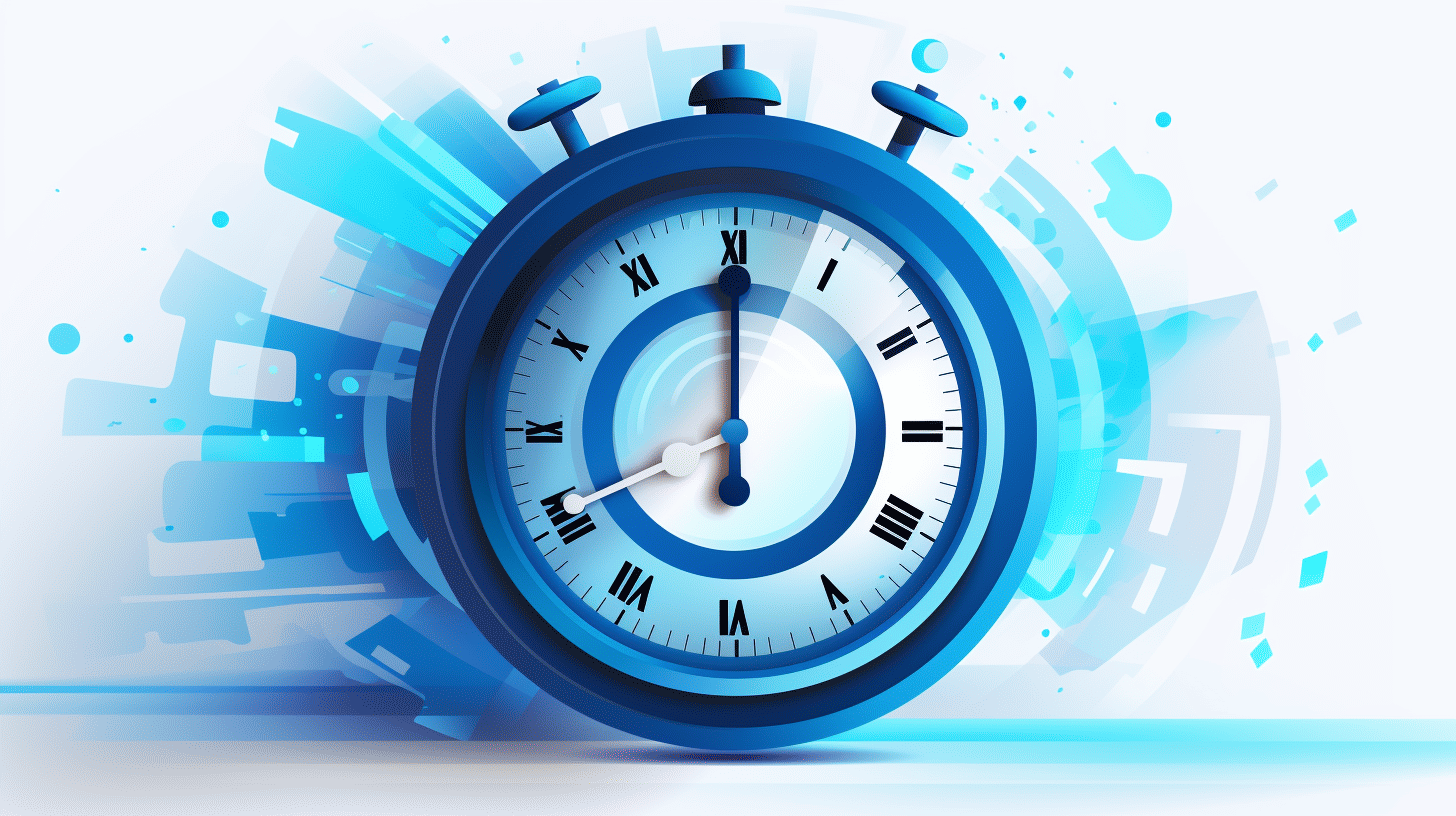维护网站通常是一项耗时的任务,对于 WordPress 用户来说,掌握更新、安全措施和性能优化至关重要。随着数字环境的不断发展,保持网站处于最佳状态对于用户体验、搜索引擎排名和整体功能至关重要。但不要害怕!在本文中,我们将探讨专门为 WordPress 用户量身定制的省时策略,以便在不牺牲质量或安全性的情况下有效维护他们的网站。从定期备份和软件更新到安全措施和优化技术,我们为您提供了一切。所以,让我们深入研究并发现让您的 WordPress 网站顺畅、轻松、无压力地运行的秘诀。💪🌟
定期备份的重要性
想象一下,您花费数小时创建和自定义 WordPress 网站,却因为技术故障或网络攻击而瞬间消失。这是任何网站所有者都不想经历的噩梦。这就是为什么定期备份对于保护您的辛勤工作和确保网站数据的安全至关重要。但备份究竟为何如此重要?
- 防止意外数据丢失: 我们都经历过这种情况——对网站进行看似无害的更改,最终却导致灾难。无论是意外删除重要文件还是引入导致网站崩溃的错误,这些事故都可能导致不可逆转的数据丢失。通过定期备份,您可以轻松将网站恢复到事故发生前的状态,从而避免不必要的压力并让您快速回到正轨。
- 防范网络攻击: 网络攻击越来越普遍,没有哪个网站能完全免受攻击。恶意软件、勒索软件和黑客攻击可能会对您的网站造成严重破坏,泄露敏感信息并使您处于危险之中。定期备份提供了安全网,如果您的网站成为网络攻击的受害者,您可以将其恢复到干净安全的状态。这就像为您的数字存在投保一样。
- 从硬件故障和灾难中恢复: 硬件故障和自然灾害可能会意外发生,对您的网站和数据造成无法挽回的损害。无论是服务器崩溃、断电还是火灾或洪水等物理灾难,拥有最新备份可确保您可以轻松恢复网站并最大限度地减少停机时间。通过将网站备份保存在异地或云端,您可以放心,无论您的物理基础设施发生什么情况,您的数据都是安全的。
现在您已经了解了定期备份的重要性,您可能想知道如何实施它们。幸运的是,有几种适用于 WordPress 网站的备份解决方案。其中一种解决方案是托管 WordPress 主机,它提供自动备份作为其服务的一部分。自动备份免除了手动备份的麻烦,并确保您的网站定期备份,而您无需动手。
因此,不要拿您网站的安全性和寿命冒险。在进行重大更改之前,请定期备份您的 WordPress 网站,并使用可靠的备份解决方案,例如托管 WordPress 主机。这样,无论遇到什么挑战,您都可以高枕无忧,因为您知道您的辛勤工作和宝贵数据是安全的。
接下来,我们将深入探讨网站安全主题,并探索如何保护您的 WordPress 网站免受常见威胁。单击 在这里, 了解有关保护您的 WordPress 网站的更多信息。
执行软件更新
保持软件更新对于维护安全高效的网站至关重要。无论是 WordPress 核心、主题还是插件,定期更新都能确保您从新功能、错误修复和安全补丁中受益。
WordPress 核心更新
WordPress 核心是网站的基础,提供基本功能和安全措施。WordPress 定期发布更新以提高性能、修复错误和解决潜在漏洞。通过保持最新版本的更新,您可以:
- 增强您网站的安全性并保护其免受黑客攻击。
- 提高网站性能和加载时间。
- 访问 WordPress 团队引入的新功能和改进。
检查您是否正在运行最新版本的 WordPress 的一个简单方法是导航到 仪表板. 点击 更新 进入更新页面。如果有新版本可用,您将看到提示您更新的通知。只需点击 立即更新 启动该过程。在执行重大更新之前,请不要忘记备份您的网站!
想要详细了解 WordPress 最新版本的最新功能和优势?查看我们的文章 最新的 WordPress 版本 以便随时了解最新信息。
主题更新
主题为您的 WordPress 网站提供视觉美感和布局。与核心更新类似,主题更新带来重要的改进和错误修复。通过定期更新主题,您可以:
- 确保与最新版本的 WordPress 兼容。
- 解决任何已知问题或错误。
- 充分利用新功能和设计增强功能。
要检查主题更新,请导航至 外貌 在 WordPress 仪表板部分,点击 主题。如果有可用更新,您将在需要更新的主题旁边看到通知。只需点击 立即更新 启动该过程。查看主题开发人员提供的所有更新说明也是个好主意,以确保顺利过渡。
插件更新
插件可为您的 WordPress 网站添加附加功能,让您可以自定义和增强其功能。与核心和主题一样,插件需要频繁更新以确保最佳性能和安全性。通过更新插件,您可以:
- 提高与最新版本的WordPress和其他插件的兼容性。
- 修复任何问题或错误。
- 从新特性和功能中受益。
要检查插件更新,请导航至 插件 在 WordPress 仪表板部分,点击 已安装的插件。如果有可用更新,您将在需要更新的插件旁边看到通知。只需点击 立即更新 启动该过程。需要注意的是,并非所有插件都会由其开发人员定期更新。如果您遇到一个已经很久没有更新的过时插件,请考虑寻找一个积极维护的替代方案。
请记住,定期对 WordPress 核心、主题和插件进行软件更新对于维护安全和优化的网站至关重要。通过保持最新状态,您不仅可以从新功能和改进中受益,还可以保护您的网站免受潜在漏洞的侵害。随时了解 最新的 WordPress 版本 并养成定期检查更新的习惯。🚀
安全措施
在当今的数字世界中,网站安全至关重要。保护您的业务并确保您的网站安全应该是重中之重。幸运的是,您可以采取多种安全措施来增强对 WordPress 网站的保护。在本节中,我们将讨论两项基本安全措施:更改 WordPress 密码和删除垃圾评论、断开的链接以及未使用的主题和插件。
更改 WordPress 密码
保护 WordPress 网站安全最基本但最关键的步骤之一是定期更改密码。通过定期更新密码,您可以降低未经授权访问和潜在安全漏洞的风险。以下是更改 WordPress 密码时需要牢记的几个关键点:
- 复杂: 确保你的密码强大且独特。避免使用常用短语或容易猜到的组合,如“password123”。相反,应创建包含大小写字母、数字和特殊字符的复杂密码。
- 更新: 定期更新密码,最好每 60-90 天更新一次。这种做法可以确保即使密码被泄露,一段时间后也会失效。
- 多因素身份验证: 尽可能使用多重身份验证 (MFA)。除了密码之外,MFA 还要求进行额外验证,例如向您的移动设备发送唯一代码,从而增加了一层安全性。
- 用户角色: 分配适当的用户角色,确保每个用户都具有必要的访问权限。限制对关键功能的访问,并仅向受信任的个人授予管理权限,可降低未经授权操作的风险。
请记住,定期更改 WordPress 密码是一种简单但有效的安全措施,可以显著降低未经授权访问的风险。
删除垃圾评论、无效链接以及未使用的主题和插件
垃圾评论、无效链接以及未使用的主题和插件不仅会使您的网站变得混乱,而且还会带来潜在的安全风险。通过定期删除这些元素,您可以增强网站的安全性并提高其整体性能。以下是您应该优先执行这些清理任务的原因:
- 垃圾评论: 垃圾评论不仅令人厌烦,还可能包含恶意链接或有害内容。通过定期删除这些评论,您可以最大限度地降低访客接触潜在有害材料的风险。
- 失效链接: 断开的链接会对用户体验产生负面影响,并会降低您的网站在搜索引擎上的排名。此外,黑客可能会利用某些断开的链接将访问者重定向到恶意网站。定期检查断开的链接并及时修复,以确保您的网站安全。
- 未使用的主题和插件: 未使用的主题和插件可能会过时,容易受到安全漏洞的影响。通过删除不再需要的主题和插件,您可以减少潜在的攻击面,并将漏洞风险降至最低。
值得注意的是,即使您没有主动使用主题或插件,您仍然应该将它们更新到最新版本以解决任何安全漏洞。
总之,定期更改 WordPress 密码并删除垃圾评论、断开的链接以及未使用的主题和插件是保护您的业务和确保网站安全的重要安全措施。通过实施这些措施,您可以显著降低安全漏洞的风险并增强 WordPress 网站的整体安全性。
要深入了解如何掌握网站安全性并了解更多有关通过托管主机保护您的业务的信息,请查看此综合指南: 掌握网站安全.
优化 WordPress 数据库
🔍 您是否知道优化 WordPress 数据库会对网站的性能和速度产生重大影响?确实如此!当您的数据库中充斥着不必要的项目时,它会降低网站速度并导致用户体验不佳。在本节中,我们将探讨优化 WordPress 数据库的好处,并为您提供一些有效优化的技巧。让我们开始吧!
优化 WordPress 数据库的重要性
WordPress 数据库是网站的核心,用于存储所有必要信息,例如帖子、页面、评论和用户数据。随着时间的推移,随着您添加和删除内容,您的数据库可能会因帖子修订、垃圾评论和过期的临时内容等不必要的内容而变得臃肿。这可能会导致页面加载时间变慢并增加资源使用率。通过优化数据库,您可以:
- 提高网站性能:当您的数据库精简高效时,您的网站将加载得更快,为您的访问者提供更好的体验。
- 减少服务器负载:优化的数据库消耗更少的服务器资源,从而允许您的托管服务提供商将其分配到其他地方或容纳更高的流量。
- 增强 SEO:Google 等搜索引擎将网站速度视为排名因素。更快的网站有助于提高搜索引擎排名并增加自然流量。
优化 WordPress 数据库的技巧
现在您已经了解了数据库优化的重要性,让我们来探索一些实用技巧来帮助您入门:
- 备份数据库: 在进行任何更改之前,创建数据库备份至关重要。这可确保您有一个还原点,以防在优化过程中出现任何问题。您可以使用 UpdraftPlus 或 BackupBuddy 等插件轻松创建数据库备份。
- 删除不需要的项目: 识别并删除数据库中不必要的内容,例如帖子修订、垃圾评论和过期的临时内容。有多种插件可用,例如 WP-Optimize 或 WP-Sweep,只需单击几下即可帮助您清理数据库。
- 优化数据库表: 随着时间的推移,您的数据库表可能会变得碎片化,导致查询速度变慢。优化表可以提高查询性能并减少数据库的总体大小。WP-Optimize 或 Advanced Database Cleaner 等插件可以为您自动执行此过程。
- 限制修订次数: 默认情况下,WordPress 会为您的帖子和页面存储无限的修订版本。但是,这会很快耗尽您的数据库空间。请考虑限制存储的修订版本数量,或使用 Revision Control 等插件来更有效地管理修订版本。
请记住,数据库优化不是一次性任务。建议定期进行维护,以保持数据库处于最佳状态。安排定期优化任务或考虑使用可以自动执行此过程的插件。
通过优化 WordPress 数据库,您可以增强网站的性能、改善用户体验并提高 SEO 效果。花点时间实施这些优化技术,您将获得更高效、更快速的网站的好处。🚀
增强网站性能
在当今快节奏的数字环境中,拥有一个加载速度快、运行流畅的网站对于成功至关重要。加载缓慢的页面会让用户感到沮丧,他们很可能会离开您的网站,转而寻找您的竞争对手。这就是实施缓存解决方案和启用维护模式在提高网站性能方面发挥重要作用的地方。让我们仔细看看这两种策略,以及它们如何有益于您的在线形象。
实施缓存解决方案
优化网站速度的一个有效方法是实施缓存解决方案。缓存涉及存储网页的静态版本,以便可以快速向访问者提供这些版本,而无需每次都从头开始生成它们。它不仅可以减少 Web 服务器的负载,还可以改善整体用户体验。以下是实施缓存解决方案有益的几个原因:
- 提高加载速度: 缓存有助于减少网页加载所需的时间,从而为访问者带来更快、更流畅的浏览体验。
- 减少服务器负载: 通过提供缓存页面而不是动态生成它们,您的 Web 服务器的工作量将显著减少,从而允许其同时处理更多请求。
- 增强的可扩展性: 缓存使您的网站能够更有效地处理高流量高峰,确保您的网站即使在需求增加期间也能保持正常运行。
在缓存解决方案方面,托管 WordPress 服务提供了无缝且可靠的选择。他们提供全面的托管 WordPress 托管解决方案,其中包括内置缓存功能,以确保最佳网站性能。要了解有关托管 WordPress 服务如何帮助您实现无缝网站性能的更多信息,您可以查看他们的 网站在这里.
启用维护模式
增强网站性能的另一个方面是当您在后台处理网站时启用维护模式。无论您是进行重大更新、安装新插件还是执行例行维护任务,启用维护模式都可以防止用户访问损坏或未完成的网站。以下是启用维护模式的主要优势:
- 改善用户体验: 通过让访问者知道您目前正在处理您的网站,您可以管理他们的期望并防止他们遇到错误或不完整的页面。
- 防止数据丢失: 维护模式允许您安全地进行更新和修改,而不会丢失重要数据或破坏用户体验的风险。
- 专业性和品牌一致性: 通过显示定制的维护页面,即使您的网站暂时不可用,您也可以保持一致的品牌形象。
启用维护模式是一种简单而有效的方法来管理网站在更新期间的性能。大多数流行的内容管理系统 (CMS)(包括 WordPress)都提供插件或内置功能,让您可以无缝激活维护模式。
请记住,优化网站的速度和性能是一个持续的过程。通过实施缓存解决方案并启用维护模式,您可以确保网站保持快速、可靠和响应迅速,为访问者提供出色的用户体验。那么,为什么还要等待呢?立即采取必要措施来提高网站性能!
备份安全措施
🔒 在当今的数字环境中,确保网站数据的安全性和完整性至关重要。保护网站的最有效方法之一是实施强大的备份安全措施。通过定期备份网站,您可以防止因硬件故障、黑客攻击或意外删除等各种因素而导致的数据丢失。在本节中,我们将探讨备份安全的一个重要方面:安排自动备份。
安排自动备份
设置自动备份是保护您网站的一种主动方法。与日常繁忙中可能被遗忘或忽略的手动备份不同,自动备份可确保定期和一致的数据保护。以下是安排自动备份至关重要的几个原因:
- 安心: 有了自动备份,您可以放心,您的网站数据始终受到保护。如果发生任何不幸事件,您将有最近的备份可供使用,从而最大限度地减少潜在的停机时间和数据丢失。
- 节省时间: 手动备份可能非常耗时,尤其是当您拥有一个拥有大量数据的大型网站时。通过定期安排自动备份,您可以消除手动干预的需要,从而腾出宝贵的时间用于其他重要任务。
- 一致性: 手动执行备份时,总是存在忘记定期执行备份的风险。自动备份可按照预定的时间表运行,从而确保一致性,而无需依赖人的记忆或执行。
- 实时或计划备份: 根据您的需求和网站功能,您可以选择安排实时或按特定间隔进行的备份。实时备份会立即捕获每个更改和更新,而计划备份可以设置为每日、每周或每月进行。
通过安排自动备份,您可以加强网站的安全性,并保护您的宝贵数据免受潜在威胁和丢失。实施这一关键的备份安全措施相对简单,可以使用适用于不同网站平台的各种备份解决方案和插件来完成。
💡 专业提示:虽然安排自动备份很重要,但定期测试备份文件以确保其完整性也同样重要。定期检查您的备份以确保它们可恢复,因为备份的有效性取决于它在需要时恢复网站的能力。
在下一节中,我们将深入探讨备份安全的另一个重要方面:加密备份文件。请继续关注,了解如何通过加密备份为您的网站数据增加一层额外的保护。
定期网站测试
您是否曾经访问过某个网站,却发现链接已损坏、按钮无法使用或表单无法使用?这可能会令人沮丧,并可能会赶走潜在客户或用户。这就是为什么定期进行网站测试对于确保顺畅、无缝的用户体验至关重要。
测试表单、链接和按钮
定期网站测试的关键方面之一是检查表单、链接和按钮的功能。这些元素对于用户交互至关重要,通常是转化的门户。以下是测试这些组件很重要的几个原因:
- 用户体验: 想象一下,填写表格后发现提交失败。这很令人沮丧,对吧?定期测试表单可确保用户可以轻松浏览您的网站并顺利完成所需的操作。
- 转化率优化: 无效链接和功能失调的按钮可能是将网站访问者转化为客户的主要障碍。通过定期测试这些元素,您可以识别并修复任何可能阻碍转化的问题,最终最大限度地提高转化率。
- SEO好处: 您是否知道断开的链接会对您的网站的搜索引擎排名产生负面影响?Google 等搜索引擎认为断开的链接会带来糟糕的用户体验,从而导致排名下降。通过定期测试链接并修复任何断开的链接,您不仅可以改善用户体验,还可以提高您的 SEO 工作效率。
为了确保全面测试,请考虑以下几点提示:
- 跨设备和浏览器测试: 您的网站应在各种设备和浏览器上都能正常使用且外观美观。请在不同设备(如台式机、手机和平板电脑)和浏览器(Chrome、Firefox、Safari 等)上测试表单、链接和按钮,以识别是否存在不一致的情况。
- 测试不同的场景: 不要将自己限制在理想情况下测试表单、链接和按钮。在不同情况下测试它们,例如输入错误、互联网连接速度慢或 JavaScript 被禁用。这将有助于发现任何潜在的缺陷或错误。
- 使用自动化测试工具: 有各种自动化测试工具可让您的测试过程更轻松、更高效。这些工具可帮助识别断开的链接、验证表单输入并确保整体功能。
请记住,定期网站测试是一个持续的过程。随着技术的发展和网站的发展,持续测试和优化以提供最佳用户体验非常重要。通过控制表单、链接和按钮,您可以确保您的网站保持用户友好性、转化率驱动和搜索引擎优化。
WordPress 维护服务
无论您是经验丰富的 WordPress 用户还是刚刚开始使用,您都知道管理 WordPress 网站不仅仅涉及创建内容和添加插件。它需要定期维护以确保您的网站顺利且安全地运行。这就是 WordPress 维护服务的作用所在。
考虑使用 WordPress 维护服务 节省时间和精力。这些服务提供多种好处,包括:
- 更新和备份:保持 WordPress 核心、主题和插件的更新对于安全性和性能至关重要。维护服务将为您处理这些更新并定期备份您的网站,因此您永远不必担心数据丢失或漏洞。
- 安全:WordPress 网站经常成为黑客的目标,保持最佳安全措施可能非常困难。维护服务将实施安全协议,监控可疑活动,并保护您的网站免受恶意软件和网络威胁。
- 性能优化:加载缓慢的网站会让访问者感到沮丧,并对您的搜索引擎排名产生负面影响。维护服务将优化您的网站速度,改善用户体验和 SEO。
- 技术支援:如果您的网站出现问题,您肯定不希望自己独自解决问题。通过维护服务,您可以获得专家的技术支持,他们可以快速解决问题并回答您的任何问题。
融入 WordPress 维护服务 将其纳入您的网站管理策略是一项明智的投资。它可以让您有时间专注于核心业务,同时确保您的网站安全、最新且性能最佳。
以下是 托管 WP:
“在 Managed WP,我们提供用于最佳性能 WordPress 维护的基本服务。从定期更新和备份到安全监控和性能优化,我们的专家团队确保您的 WordPress 网站处于最佳状态,让您专注于您最擅长的领域。”
结论
总之,高效的网站维护对于希望确保网站顺利运行和最佳性能的 WordPress 用户至关重要。通过定期备份数据、执行软件更新、实施安全措施、优化数据库、增强网站性能和安排自动备份,您可以主动保护您的网站并提供无缝的用户体验。
然而,网站维护可能既耗时又复杂,尤其是对于那些可能没有技术专长或资源来有效处理它的人来说。这就是 Managed-WP™ 的作用所在。作为一款高级托管 WordPress 云托管平台,Managed-WP™ 简化了基础设施,并提供了自由的数字体验,让您可以专注于核心业务,而不是网站维护的技术方面。
借助 Managed-WP™,您可以依靠专家全天候解决问题和支持,确保您的 WordPress 网站顺畅安全地运行。利用 Managed-WP™ 提供的全面服务和功能套件,简化您的网站维护流程并优化 WordPress 网站的性能。
不要让网站维护成为负担。请相信 Managed-WP™ 能够处理技术问题,而您可以专注于提升在线影响力。访问 托管-WP.com 了解有关 Managed-WP™ 如何简化您的网站维护并为您和您的访问者提供无缝体验的更多信息。
🚀 使用 Managed-WP™ 简化您的网站维护。利用行业领先的专业知识和全天候支持来优化您的 WordPress 网站的性能。访问 托管-WP.com 今天就开始吧!
常见问题
- 为什么网站维护对于 WordPress 用户来说很重要?
网站维护对于 WordPress 用户来说非常重要,可以确保他们的网站安全、最新且运行良好。定期维护有助于防止安全漏洞、提高网站速度、增强用户体验并确保与最新的 WordPress 更新兼容。
- 有哪些节省时间的策略可以实现高效的网站维护?
一些节省时间的高效网站维护策略包括自动更新和备份、使用可靠的网站监控工具、优化和压缩图像、实施缓存系统以及定期清理不必要的插件和主题。
- 我应该多久对我的 WordPress 网站进行一次网站维护?
建议定期为您的 WordPress 网站执行网站维护任务。这包括更新插件、主题和 WordPress 核心、优化数据库、检查断开的链接以及监控安全性。根据您网站的复杂性和活动,每周或每月维护通常就足够了。
- 我需要技术知识来执行 WordPress 上的网站维护吗?
虽然拥有技术知识会有所帮助,但执行 WordPress 网站维护并不总是必要的。许多维护任务可以自动执行,或者使用用户友好的插件和工具轻松执行。但是,对于更复杂的问题或高级自定义,可能需要技术知识。
- WordPress 用户忽视网站维护会带来什么后果?
忽视 WordPress 网站维护可能会导致各种负面后果,包括安全漏洞、页面加载时间缓慢、功能损坏、搜索引擎排名下降、恶意软件或黑客攻击风险增加以及对用户体验产生负面影响。



















